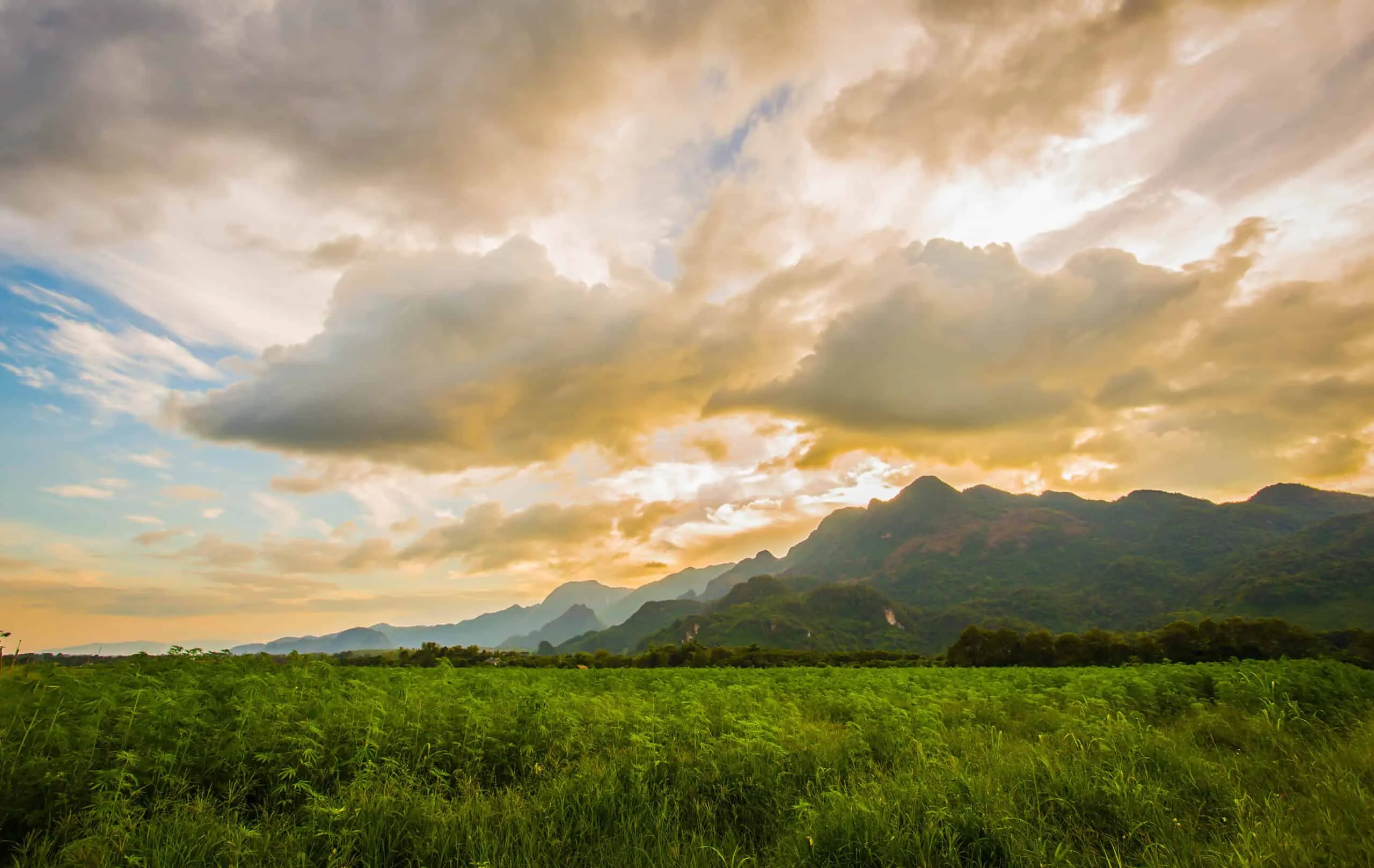
The answer isn’t a one size fits all. It is all about intent. What is your end goal? Your intentions will answer the question we are all asking, “How many hemp plants per acre?”
The answer based on your intentions depends on whether you’re growing CBD hemp or industrial (traditional) hemp. With that, the amount of hemp plants you plant per acre will matter substantially.
Spacing For Hemp Plants
According to the Successful Farming article, “What Farmers Need to Know About Growing Hemp,” Hemp farming is done at a rate of “1,000 to 1,600 plants per acre,” which are, “planted and tended to as separate plants.” So, if you’re looking to grow a crop of CBD oil producing hemp plants, you’ll need to consider spacing for hemp plants since there’s labor with tending between the rows of plants and crowding can create additional time, costs. Generally when spacing for hemp plants you want to give them a good three to five feet because these plants are very particular about spacing and how much sunlight they get. Anecdotal information from experienced farmers suggest 2,000 to 2,500 plants per acre may be achievable.
Industrial Hemp
On the flip side, industrial hemp is “grown for mass-market products such as textiles and bioplastics,” and this traditional hemp, “has a planting rate of 400,000 per acre (roughly 100 plants/square meter), and is drilled in like wheat” (Betsy 2019).
Michael Bowman, the founder of the National Hemp Association, went on to describe the plant, “It [industrial hemp] grows tall and you harvest the tops for seed production and then use the stalk for a number of industrial purposes” (Betsy 2019).
CBD Oil or Industrial Hemp Products?
Many articles have mentioned that the industrial hemp market will be dominated by foreign producers, like China, and that hemp grown for CBD oil production will be the more lucrative route for farmers to take in the USA.
The market differences, between industrial hemp and CBD hemp, are echoed in the article, “Hemp can be lucrative, but there are drawbacks,” which quotes National Hemp Association board member, Alex Seleznov:
“Prices for hemp fiber and seed will be competing with foreign producers, mainly China… Fiber and seed producers want a production mill within 30 miles of where the hemp is grown, and that’s just not feasible in this country” (Journal-Advocate 2018).
The article goes on to point out that:
“That leaves CBD,” Seleznov said “and that means a different kind of farming. While seed and fiber hemp plants can be grown close together and harvested with most traditional equipment, CBD-producing plants, much like their THC-producing cousins, have to be planted at wider intervals and have to be harvested by hand” (Journal-Advocate 2018).
CBD Hemp Farming – Give it Some Space
The main difference between hemp farming for CBD oil and traditional hemp for mass market products comes down to spacing: CBD hemp plants need space (only 1,000 to 1,600 plants per acre) so they can grow and bush out to foster more bountiful flower yields.
Traditional, industrial hemp requires tall stalks in order to be profitable so they’re planted close together at a rate of 400,000 per acre to get longer stalks (crowded plants will grow tall and skinny to reach for the sun).
Nemadji’s next blog will go into what kind of yield you can expect per acre/plant and where to find certified genetics for planting your hemp crop. Ask us about our partnerships and look at split processing your fall harvest to maximize its value: end products are more valuable than raw biomass!
REFERENCES:
Freese, Betsy. “What Farmers Need to Know About Growing Hemp.” Successful Farming: 17 January 2019. Website: https://www.agriculture.com/news/crops/what-farmers-need-to-know-about-growing-hemp
Journajournal-advocate.com/…/hemp-can-be-lucrative-but-there-are-drawbacksl-Advocate. “Hemp can be lucrative, but there are drawbacks.” Journal-Advocate: 27 February 2018. Website: http://www.journal-advocate.com/sterling-local_news/ci_31699721/hemp-can-be-lucrative-but-there-are-drawbacks
